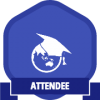ICT and Web 2.0 Tools
Information Communication Technology has influenced English language teachers on a large scale. It is commonly agreed that ICT and Web 2.0 tools demand lots of skills and practical knowledge from the teachers. Here is a nice representation of the modern teacher of the digital age:

Impact of Information Commucation Technology on Language Learners
“Technologies enable the traditional classroom to be connected to the real world. The Internet does provide a useful resource of all kinds of authentic material. There is a range of tools that can enable us to be social in all sorts of ways:
a. Textually: This can be achieved with blogs and wikis, or with collaborative writing software, like Google Docs. Chat is also text and tools like MSN, or Google Talk, can be used to rehearse spoken language in writing. Other tools where text is very important are forums, which have formed the backbone of online education up until the recent past.
b. Orally: As well as being used for text chat a tool like MSN or Skype can be used for spoken communication. Until quite recently the communication was one-to-one, but now groups can speak together.
c. Visually: MSN, Skype, Adobe Connect Professional, Elluminate, WizIQ and other similar tools can be used for video conferencing exchanges. These tools add a visual dimension to the interaction.
d. Aurally: Podcasting.
Developing an understanding of personalised learning is of fundamental importance. Previous research by Sebba, Brown, Stewart, Galton, and James (2007) found that ‘participation’ was key to understanding personalised learning”
(Computers & Education 54 (2010) 767–775 )
In “Personalising learning through the use of technology” Robinson and Sebba (2010) state that “a shift towards a greater role for learners in orchestrating resources in the classroom will be valuable and concludes that there is potential for ICT to support more dialogic and synergistic approaches in group and individual activity than is seen at present”.
Lesson to be taken:
I don’t know if you would agree with me but I agree with others who say that technologies are not enough on their own to make a difference, but that teachers bring a particular understanding of language and the needs of their learners to the creation of suitable activities. In this vein, it can also be concluded that students and teachers need digital literacy skills to be able to blend ICT with learning English language.
Blended Learning
What is Blended Learning?
“Blending of face to face instruction with various types of non-classroom technology mediated delivery” (Dziuban et. Al: 2004)
Face to face + Fully on-line components = reduced class contact hours (Reduced seat time)
a continuum of instructional models ranging from face to face to fully on-line
Some examples:
http://questgarden.com/author/create/preview.php?l=61451-080304143137&pt=student&p=introduction
http://ocw.metu.edu.tr/course/view.php?id=82
Where would these courses fall in the continuum?
You will see that these courses would fall into different places in the continuum. Can you suggest any other examples of blended courses? (Please share the links :))
Also there are different names for blended teaching such as:
- Web-based learning
- E-learning
- Asynchronous learning networks
- Hybrid learning
- Blended learning
- Mixed-mode instruction
Most frequent questions regarding design & implementation:
- Is it web-enhanced classroom instruction?(Web enhanced course; face to face courses that make pedagogically significant use of web through a course management system but do not reduce seat time)
- Is it classroom enhanced on-line instruction?
- What proportion of each is required to label a course as blended?
What would you say?
(References: Gary Motteram and Pete Sharma (2009).Blending Learning in a Web 2.0 WorldInternational Journal of Emerging Technologies & Society Vol. 7, No. 2, pp: 83 – 96)
cross posted at Asli at Hoges School Rotterdam wiki page.


